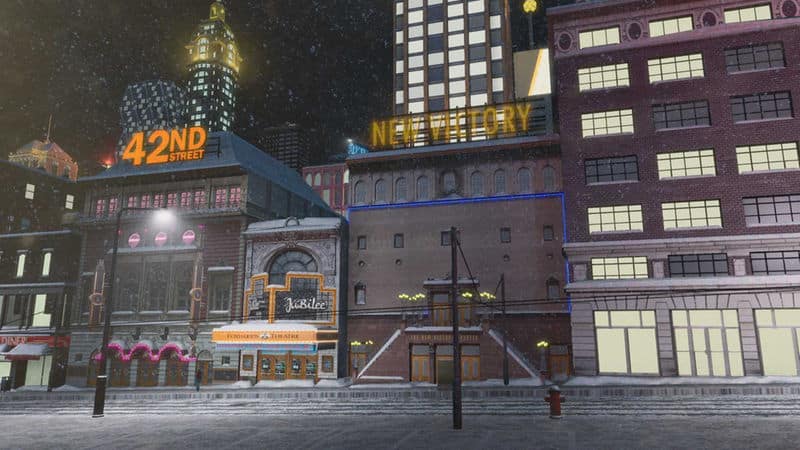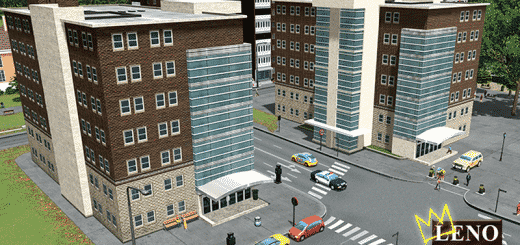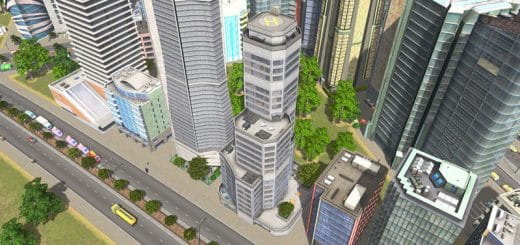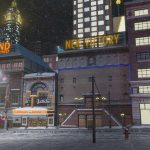
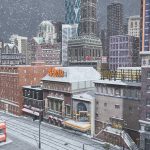
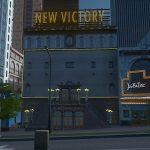
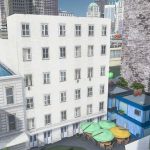

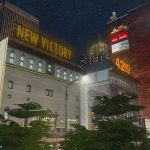
New victory theater
Please leave a vote if you download! This is a 2×3 Leisure growable.
About the model
Probably the most famous theater of Broadway, the New Victory Theater is part of my 42nd street series. Has two optional props, the billboard and the chandeliers. Make sure to subscribe to them.
This model has about 1999 tris and a 2048×512 texture, with a diffuse, shadow, normal, illumination, color and specularmap.This model has a custom LoD, which is about 48 tris with a 256×256 texture, with a diffuse, color and illumination map.
About the building
Built by Oscar Hammerstein I in 1900 and designed by architect Albert Westover, the theater opened as the Theatre Republic on September 27, 1900, with Lionel Barrymore in James Herne’s play Sag Harbor. It was the third theater built on West 42nd Street. Inside the theater, the elaborately decorated interior was crowned with a large dome that featured lyre-playing cherubs (or putti in Italian) perched on its rim. Amazingly, all of the original putti and one lyre still remain today.
Two years later the house was leased by David Belasco, who renamed it the Belasco Theatre and made major renovations to both the house and the stage. Belasco produced a series of plays at the theater starring Mrs. Leslie Carter, George Arliss, Mary Pickford, and Lillian Gish.
In 1910 the name became Republic Theatre when Belasco renamed his Stuyvesant Theatre on West 44th Street for himself. The Republic’s most famous tenant during this time was the play Abie’s Irish Rose, which ran for 2,327 performances between 1922 and 1927.
Billy Minsky converted the Republic into Broadway’s first burlesque house in 1931, calling it Minsky’s Burlesque. It remained as such until 1941. Minsky built a double runway down the middle of the auditorium for his strippers, the most famous of whom was Gypsy Rose Lee.
In 1942, it became a movie theater called The Victory, patriotically named in honor of the World War II conflict. In 1972, as the neighborhood gradually disintegrated, it became the first theater on 42nd Street to exhibit XXX pornographic films. In the early 1990s, the Victory returned to legitimate theater, using its stage space as a venue for offering plays by non-profit companies. It presented the En Garde Arts company’s production of the play Crowbar in 1990 and in 1991 the Theater for a New Audience offered Shakespeare’s Romeo and Juliet, followed by other productions.
In 1990, New York City, together with the State of New York, jointly took possession of the Victory. In 1992, it was one of seven 42nd Street theaters to fall under the auspices of The New 42nd Street, Inc., a non-profit corporation set up to oversee the redevelopment of these historic theaters and operate three projects: The New Victory Theater, The New 42nd Street Studios and The Duke on 42nd Street.
The Victory was the first theater to be restored in an effort to revitalize 42nd Street and Times Square, and between 1994 and 1995 it underwent an $11.4 million renovation headed by Hugh Hardy of the architectural firm of Hardy Holzman Pfeiffer Associates. The restoration included rebuilding the original exterior double staircase that had been removed in 1911 for the widening of West 42nd Street, and returning the rest of the theater to much the way it looked during the Belasco era.
On December 11, 1995, the refurbished theater, renamed The New Victory Theater, opened as New York’s first theater for kids and families. Upon its reopening, it became once more the oldest operating theater in New York City.
Video game
The façade of The New Victory Theater is in the video game Grand Theft Auto IV. During the sequence in “Liberty City’s” fictionalized 42nd Street/Times Square, the theater is featured. In the game, the theater is called the Liberteen and presents shows like Banging Trash Can Lids for an Hour. And now we get to enjoy it aswell in Cities: skylines. ?
Changes
– Some texturechanges, windows should look quite a bit better now.
– Fixed Chandelier bug.

